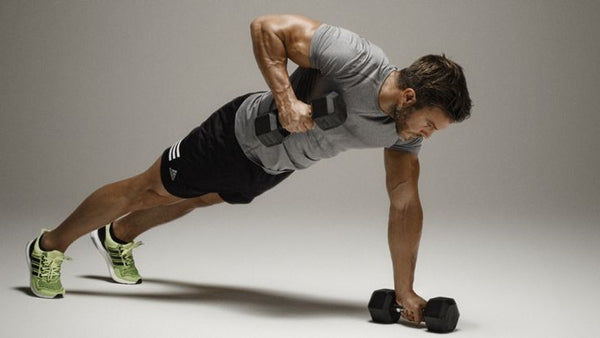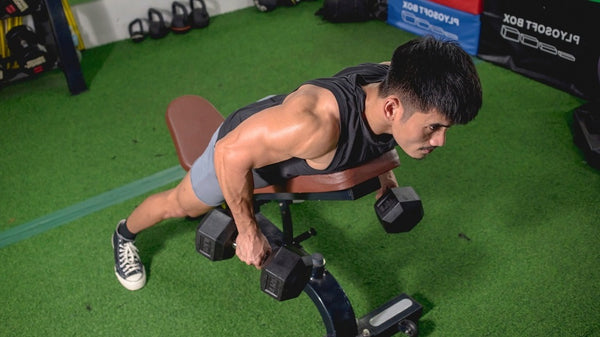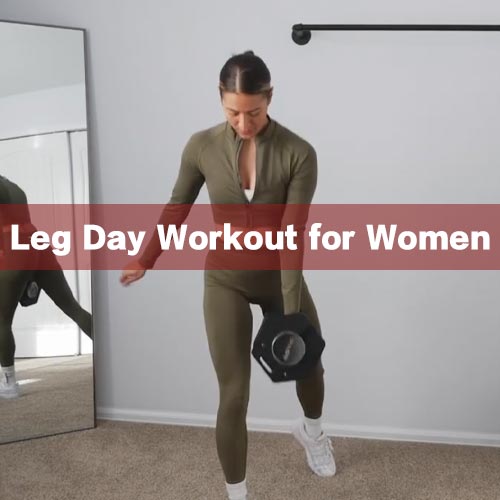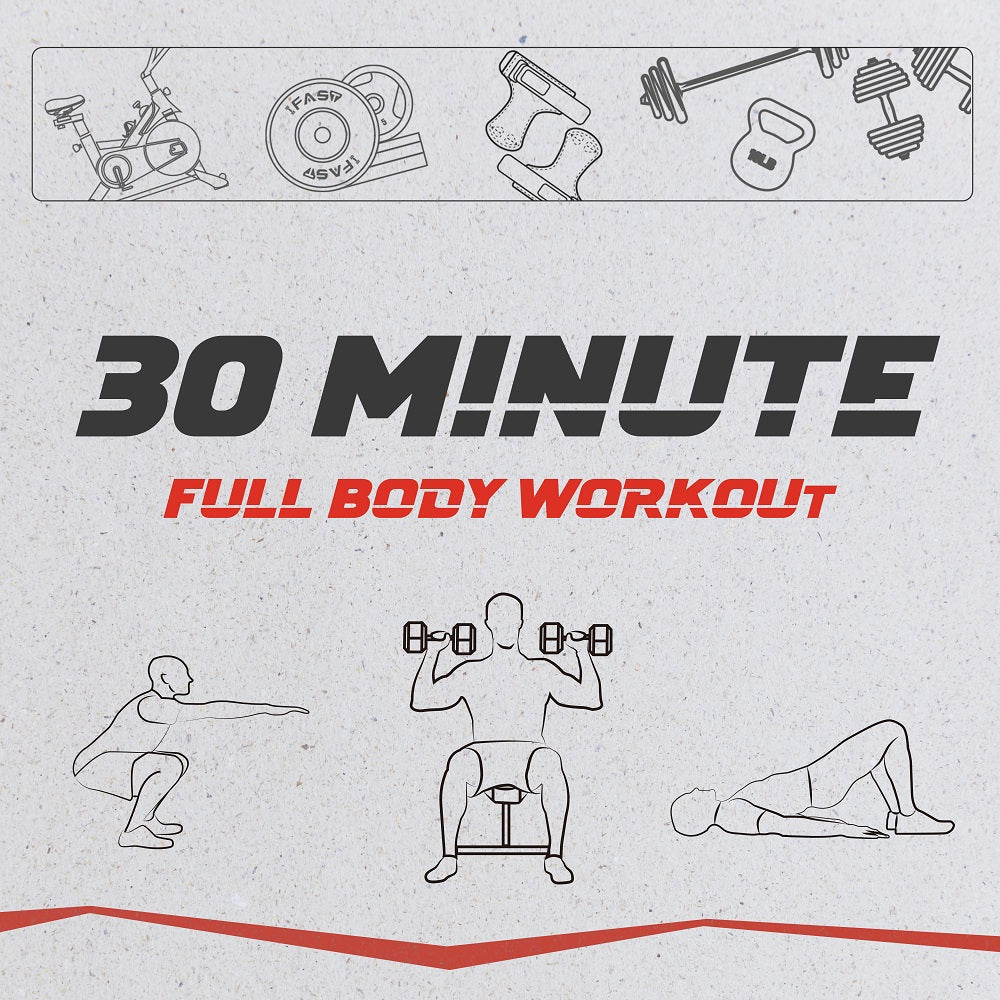
Are you looking to build a stronger, more muscular back? Back rows should be a staple exercise in your home fitness routine. This compound movement targets multiple muscle groups in your upper body, making it an efficient and effective way to build strength and definition.
The Beauty of Back Rows
Back rows belong to the horizontal pull exercise category. This simply means you're pulling a weight horizontally towards your body, as opposed to vertically like with rows or pulldowns.
The Benefits of Back Rows
Improved Posture: Back rows help strengthen the muscles responsible for retracting and stabilizing the shoulder blades, aiding in maintaining proper posture.
Increased Upper Body Strength: By targeting the rhomboids, trapezius, and posterior deltoids, back rows contribute to greater upper body strength and muscle development.
Injury Prevention: Strengthening the upper back and shoulder muscles can help alleviate neck and shoulder pain and reduce the risk of injuries.
Enhanced Athletic Performance: Strong back muscles are crucial for activities such as lifting, pulling, and throwing, making back rows beneficial for athletes and individuals participating in various sports.
Back Rows Muscle Worked

Back rows primarily target the muscles of the upper back, but they also engage several other muscle groups. Here are the main muscles worked during back rows
Rhomboids
The rhomboids are located in the middle of the upper back and are responsible for retracting the shoulder blades. They are highly activated during back rows, helping to improve posture and strengthen the upper back.
Trapezius
The trapezius is a large muscle that covers the upper back and neck. During back rows, the middle and lower fibers of the trapezius are engaged, helping to stabilize and retract the shoulder blades.
Posterior Deltoids
The posterior deltoids, or rear delts, are the muscles located at the back of the shoulders. They assist in shoulder extension and are worked during back rows, contributing to improved shoulder strength and stability.
Biceps Brachii
The biceps brachii muscles, located in the front of the upper arms, act as synergists during back rows. While not the primary target, they assist in elbow flexion as you pull the weight toward your body.
Forearm Muscles
The muscles of the forearm, including the brachioradialis and wrist flexors, are also engaged during back rows to help grip and stabilize the weight.
7 Barbell Rows to Building a Strong Back
- Bent over Row
- Upright Rows
- Landmine Rows
- Inverted Row
- Pendlay Rows
- Seal Row
- Renegade Row
- Chest Supported Row
Barbell Rows
Performing barbell rows is an excellent way to target your upper back, including the lats, traps, and rhomboids.

- Set Up: Stand with feet shoulder-width apart, bend at the hips, and grip the barbell with hands slightly wider than shoulder-width.
- Grip: Grasp the bar with palms facing your body (pronated grip).
- Body Position: Keep a straight back, chest up, and engage your core.
- Lift: Pull the barbell towards your lower chest or upper abdomen, squeezing your shoulder blades together.
- Full Range of Motion: Ensure a complete range of motion during both the lift and descent.
Mastering barbell rows requires practice and proper form. Begin with lighter weights, gradually progressing as you improve.
Upright Rows

- Start Position: Stand with feet shoulder-width apart.Hold a barbell with an overhand grip, hands slightly closer than shoulder-width.
- Lift: Pull the barbell straight up toward your chin, leading with your elbows. Keep the bar close to your body.
- Barbell Height: Aim to bring the bar just below your chin or to upper chest level.
- Lower: Lower the barbell back down in a controlled manner.
Upright Rows are effective for developing shoulder muscles but should be done with attention to form and individual fitness levels.
Landmine Rows

- Setup: Use a landmine attachment or securely place one end of a barbell into a corner. Load weight on the opposite end.
- Positioning: Stand perpendicular to the barbell. Maintain a slight knee bend with a straight back.
- Grip: Hold the free end of the barbell with an overhand grip.
- Execution: Pull the barbell toward your hip, keeping the elbow close. Squeeze your shoulder blades at the top.
- Lowering: Lower the barbell in a controlled manner.
Inverted Row
The inverted row is an effective bodyweight exercise that targets the muscles of the upper back, including the rhomboids, trapezius, and posterior deltoids. It can be performed using a suspension trainer or a bar placed at waist height.

- Set up: Position yourself facing the bar or suspension trainer. Grab the bar or handles with an overhand grip, slightly wider than shoulder-width apart. Extend your arms fully and walk your feet forward, leaning back until your body is at an incline.
- Body Position: Keep your body in a straight line from head to heels, engaging your core and glutes. Your arms should be fully extended, and your shoulders should be pulled down and back.
- Pulling Motion: Initiate the movement by retracting your shoulder blades and bending your elbows. Pull your chest towards the bar or handles while keeping your body straight. Aim to bring your chest close to the bar or handles.
- Squeeze and Lower: At the top of the movement, squeeze your shoulder blades together to fully engage the upper back muscles. Pause briefly in this position. Then, slowly lower yourself back to the starting position with control, fully extending your arms.
Pendlay Rows
Pendlay rows are a variation of the barbell row exercise that focus on targeting the muscles of the upper back, including the rhomboids, trapezius, and latissimus dorsi. They also engage the biceps, forearms, and core muscles.

- Set up: Start by standing with your feet shoulder-width apart, knees slightly bent. Place a barbell on the floor in front of you.
- Grip the bar: Bend down and grab the bar with an overhand grip, hands slightly wider than shoulder-width apart. Your palms should be facing down.
- Starting position: With a straight back, hinge forward at the hips until your torso is parallel to the floor. Your knees should be bent, and your back should be at a slight angle, not completely parallel to the ground.
- Pulling motion: Initiate the movement by pulling the barbell towards your lower chest or upper abdomen. Keep your elbows close to your body as you lift the weight. The barbell should touch your body at the top of the movement.
- Squeeze and lower: At the top of the movement, squeeze your shoulder blades together and pause for a moment to engage the upper back muscles fully. Then, lower the barbell back down to the floor in a controlled manner, making sure to reset your form before each rep.
Seal Row
The seal row is a variation of the bent-over row exercise that primarily targets the muscles of the upper back, including the rhomboids, trapezius, and latissimus dorsi. It also engages the biceps, forearms, and core muscles.

- Set up: Start by positioning a barbell on a rack or platform at about knee height. Place a bench or step in front of the barbell.
- Grip the bar: Bend down and grab the bar with an overhand grip, hands slightly wider than shoulder-width apart. Your palms should be facing down.
- Position yourself: Step onto the weight bench or platform, with your torso parallel to the floor. Your feet should be shoulder-width apart, and your knees should be slightly bent.
- Starting position: With a straight back, hinge forward at the hips until your torso is parallel to the floor. Your arms should be fully extended, and the barbell should be off the rack or platform.
- Pulling motion: Initiate the movement by pulling the barbell towards your lower chest or upper abdomen. Keep your elbows close to your body as you lift the weight.
- Squeeze and lower: At the top of the movement, squeeze your shoulder blades together and pause for a moment to engage the upper back muscles fully. Then, lower the barbell back down to the starting position in a controlled manner.
Renegade Row

- Grab a pair of dumbbells and assume a push-up position with your arms fully extended, hands grasping the dumbbells in a neutral grip.
- Engage your core by tightening your abdominal muscles. Your body should form a straight line from heels to head.
- Keep your hips square and avoid any twisting or arching of the lower back.
- Row one dumbbell straight up towards the side of your ribs by driving your elbow straight back, squeezing your shoulder blade in towards your spine.
- Focus on pulling with your back and lats, avoiding excessive arm movement.
- Pause briefly when the dumbbell is close to your body at the top of the movement.
- Slowly lower the dumbbell back to the start position by straightening your arm.
- Repeat on the other side by rowing the opposite dumbbell up, keeping your core braced.
Chest Supported Row

- Set an incline bench to around 60 degrees or position a flat bench on top of a plyo box or bench.
- Grab a dumbbell or plate in each hand and lie with your chest on the bench, allowing the weights to hang straight down from shoulders.
- Engage your core and keep your body in a straight line, no arching or sagging.
- Pull both weights straight up towards your lower chest or upper abs by driving your elbows straight back.
- Lead by squeezing your back and pulling your shoulder blades together.
- Pause with the weights close to your body at the top of the movement.
- Slowly lower the weights back down by straightening the arms, resisting the downward motion.
Common Back Row Mistakes to Avoid
As amazing as back rows are, there are some frequent pitfalls that can limit your results or lead to injury if not corrected. Pay attention to these common mistakes:
Using Momentum
If you find yourself heaving the weight by rocking your torso, you're using too much weight and compensating with momentum instead of muscle. Lighten the load and control each rep.
Lifting With Arms Only
Back rows are not an arm exercise! If you feel most of the tension in your biceps, shift your focus to squeezing your back to initiate the pull.
Rounding Your Lower Back
When you let your lower back round and hunch over, you take your back muscles out of the movement and put your spine in a compromised position.
Leaning Back Too Far
Some lean is expected for leverage, but leaning back excessively stresses the lower back and reduces back engagement. Stay within a 30-degree lean.
Shrugged Shoulders
Avoid the tendency to shrug your shoulders up by your ears as you pull. Keep your shoulder blades squeezed down and back for full range of motion.
Form is always the top priority with any exercise. Prioritize quality reps over chasing heavier weight, and your back will reward you in return.
Effective Back Row Workout Plans
Now that you have all the back row know-how, it's time to put it into action! Here are a couple of sample home workout routines using different back row variations:
Workout 1: Back Basics
| Barbell Bent-Over Row | 4 sets of 8-10 reps |
| Seal Row | 3 sets of 12-15 reps |
Workout 2: Back & Biceps
| Renegade Row | 4 sets of 10 reps per side |
| Chest Supported Row | 3 sets of 12-15 reps |
| Concentration Curl | 3 sets of 10-12 reps per arm |
Workout 3: Back & Core Burner
| Inverted Row | 4 sets of 15-20 reps |
| Seal Row | 3 sets of 12-15 reps |
| Plank | 3 sets of 60 seconds |
For best results, incorporate back rows 2-3 times per week and allow for proper rest and recovery between sessions. Mix up different grips, angles, and tempos to continually challenge your back in new ways.
A strong back makes every aspect of fitness easier, both in the gym and in everyday life. Make back rows a priority and equip yourself with the ultimate in back-building power!


